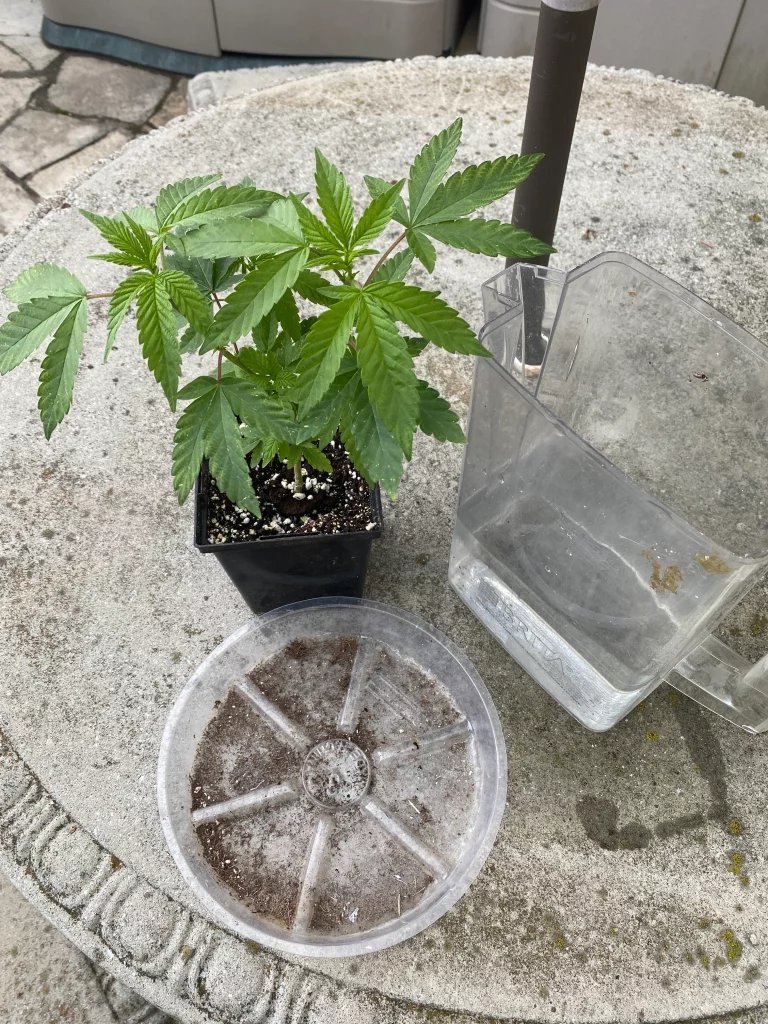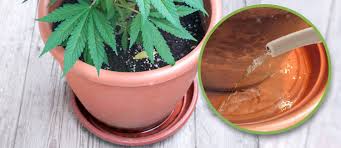English
Watering plants is an art and, of course, an obligation that all growers must keep under control. It is an essential skill in plant care. In this article, we will look specifically at inverted pot plant watering.
How to deal with watering regime in cannabis cultivation?
Many growers have a problem with balance when watering their plants. Have I overwatered? Am I not watering enough? Is my water too acidic? Watering can be one of the trickiest parts of plant parenting.
Our main advice for watering is: Don’t water on a schedule. Instead, pay close attention to your plants, check on them once or twice a week, and water as needed.
If you’re trying to grow in a more organic way, you can follow the advice of Dr. Av Singh, who always says that “the plant should dictate when it wants to eat and when it wants to drink.” When using living soil, the plant eats when it wants without the grower forcing it to take in nutrients.
When we water from the bottom of the plant, we are giving the plant room to drink when it wants and take in the right amount of water it needs. Drainage holes in the pot allow the water to soak into the soil over a period of time without over saturating it.
How to do reverse watering?
This is a technique where you need a potted plant (must have drainage holes), water and a saucer.
- Fill the saucer with enough water to reach the bottom layer of the potting soil. Some growers like to use drainage stones at the bottom of the pot, so make sure the water level is high enough to reach the soil. Keep in mind that different substrates absorb water differently. Soil absorbs water faster than peat moss, so keep this in mind as you wait for the water to soak in.
- Place the pot in a saucer.
- Give it some time. Leave the plants in the bath for 10-15 minutes. You will notice that the water level in the saucer has dropped. An easy way to check if the plant has been watered enough is to stick your index finger a few inches down into the soil to see if it is moist. If the soil is still dry, wait a little longer.
- Remove the plant from the saucer. There may be excess water left in it. Do not add this to the plant as the soil will not absorb it. Discard it and return the plant to its home. You may find that a small amount of water drains from the plant, and that’s okay.
I encourage you to try it at least once and see if you find it more manageable. I have found that it is beneficial to water the plant from time to time, as the topsoil can become very dry and create a crust-like layer.
Benefits of bottom watering
- Promotes overall root growth by forcing the roots to reach down for water.
- Helps prevent fungus gnats, which thrive in the top layer of moist soil.
- Prevents soil saturation
- Ensures even distribution of moisture throughout the soil. Over-watering can result in dry spots
- Reduces the possibility of waterlogging and overwatering.
- Prevents water from splashing onto the foliage. Sometimes when watering plants, water can splash onto the leaves, which can result in scorching of the plants. Bottom watering avoids this completely.
Feeding
When it comes to bottom feeding, it is the same concept as when you feed the plant in the normal way. First add nutrients to the water and then bottom feed. If you top feed, skip the bottom water altogether. You will need the water to leach the nutrients down into the soil.
If you are interested in learning more about irrigation, you can also check out our previous article.
Good Luck
Published by Jan Veselý
12/03/2023choose and buy cannabis seeds from our offer
our pleasure




























I have never tried this method, but I think this season can be the right one for it.
Watering is very important, well setup hydrosystem is top 😀 but unfortunately each cannabis plant needs different care